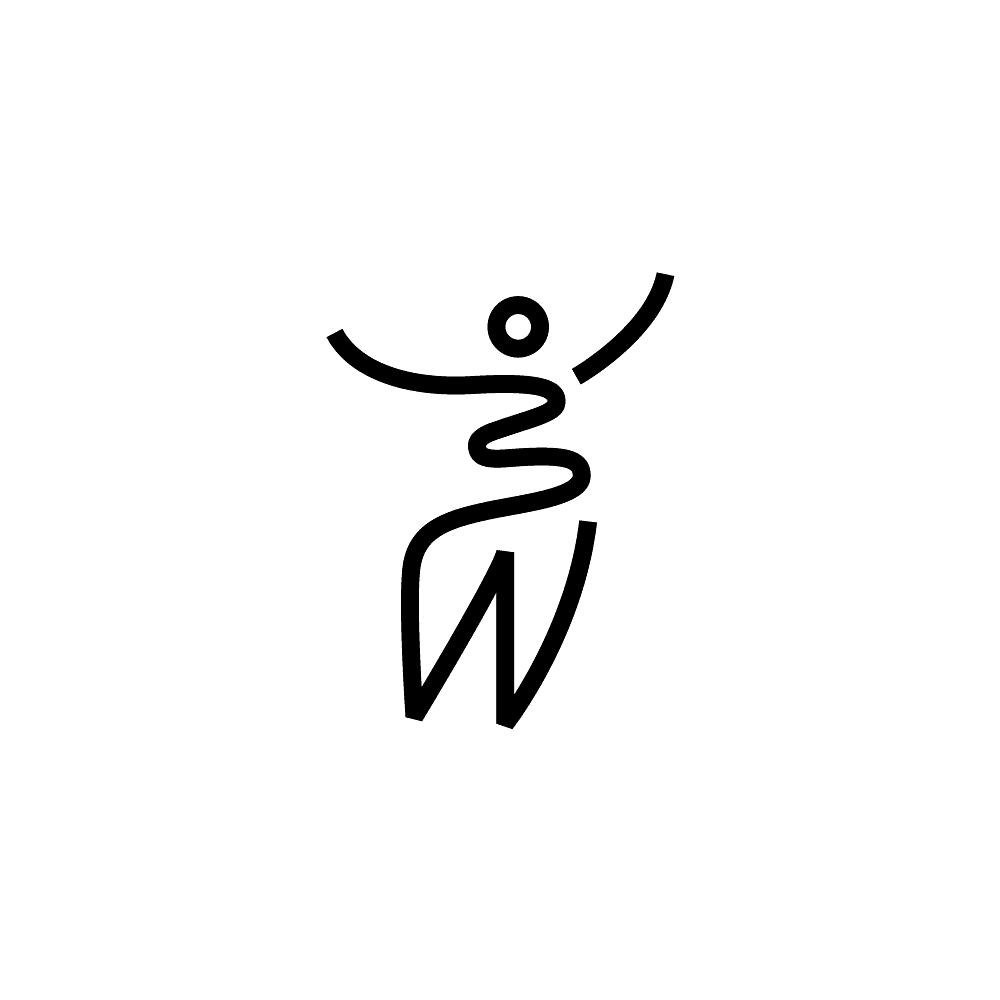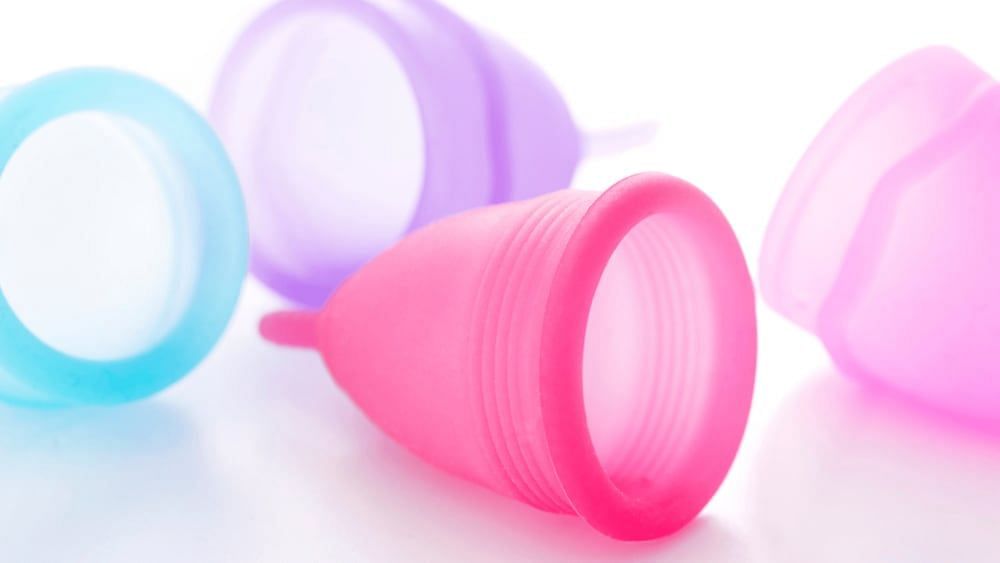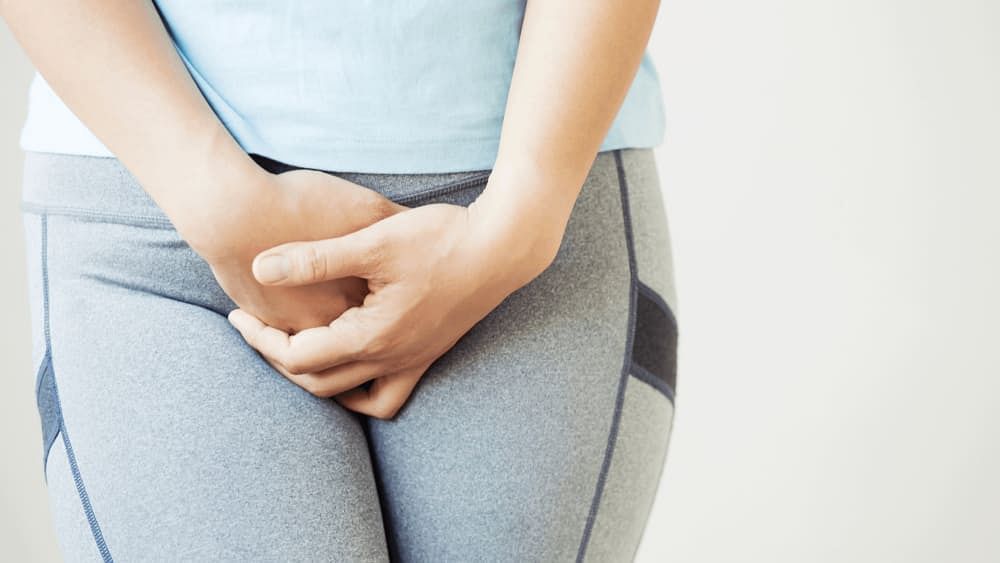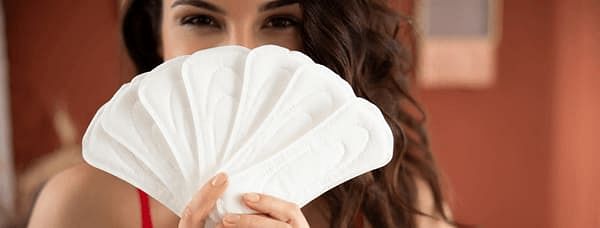Menstrual cups have been around since the late 1930s. But, earlier periods were considered a maligned act and it never got popular in India. The idea of period cups revolted people.
Menstrual Cups are an eco-friendly alternative to sanitary pads and tampons. It is inserted into the vagina during menstruation. It collects the menstrual fluid into the cup which prevents leaking onto your clothes.
But, later it becomes popular with working women who can’t frequently use the washroom and with a fear of red patches on pants, the idea of menstrual cups hit out loud. Now while period cups make life easy, they come with their own set of problems. The concerns of insertion and discomfort pull Indian women apart.
So, what are menstrual cup problems? What are the menstrual cup disadvantages? Are there any side effects of menstrual cups? We have answers to all your questions here.
What Is a Menstrual Cup?
A menstrual cup is a reusable female hygiene product used by women during menstruation. You insert a menstrual cup into your vagina to collect period fluids. It is made from rubber or silicone and is shaped like a funnel. The capacity of these cups to hold more blood than other alternatives has prompted women to consider them as a viable substitute for tampons. A cup can be worn for up to 12 hours, depending on your flow.

Is Menstrual Cup Safe?
Menstrual cup dangers are often asked about a lot. However, it is generally not dangerous as long as it's used properly. The use of menstrual cups is no more hazardous than using tampons or any other period products. However, the use of menstrual cups, similarly to tampons, does carry some risks, especially when they are not used correctly.
Menstrual Cup Side Effects
However, as per studies, the following are some menstrual cup disadvantages or potential risks associated with improper use of menstrual cups.
1. Leakage
Like any other female hygiene product, menstrual cups can leak when in use, which usually happens if the cup is overfilled with liquid or if it is not fitted well. Regularly emptying the cup and choosing one that fits well will help reduce leakage since it will form an airtight seal around the vaginal wall, and it won't move too much throughout the day.
2. Irritation
There may be several reasons why you might experience irritation from using menstrual cups, and most of them can be avoided. If the cup was inserted without proper lubrication, the cup was of the wrong size, or the cup wasn't cleaned correctly between uses, those situations can cause discomfort. Often, this can be avoided by applying some water-based lubricant to the outside of the cup. Make sure to carefully read the instructions on the package of the product for detailed information.
3. Injuries and Pain
It is possible for objects inserted into the vagina to cause small injuries or pain. The likelihood of experiencing these issues increases if one inserts the menstrual cup roughly, has long nails, or uses an oversized cup.
4. Allergies and Rashes
An allergic reaction is possible when using any product, and menstrual cups are no exception. Nevertheless, since they are made of medical-grade silicone, they should not cause an allergic reaction with your vagina unless you have an allergy to silicone. Furthermore, different brands of menstrual cups might work better for some women due to the kind of materials they use.

5. Urinary Problems
When you use menstrual cups, you can introduce bacteria to the urinary tract because inserting any object into the vagina can irritate the urethra. However, there are very rare instances when the cup pushes against the urethra, causing it to become blocked, resulting in difficulties urinating.
6. Dislodged or Expelled IUD
Using a menstrual cup after you've had an intrauterine device (IUD) inserted is said to decrease its effectiveness because the cup can pull on the string or become undisturbed, which can cause the IUD to no longer function. However, as per studies, the expulsion of an IUD occurs naturally in roughly one out of twenty people, regardless of whether they use menstrual cups. As per other studies, using menstrual cups doesn't significantly increase your risk of expulsion from your IUD overusing tampons or pads.
7. Infections
A rare but serious complication of the use of menstrual cups is an infection, most often caused by the transfer of bacteria from hands to cups rather than the cups themselves. For instance, infections such as yeast infections and vaginosis can develop due to the presence of bacteria in the vagina and result in a fluctuating pH level. To prevent this, you should wash your hands well with lukewarm water and antibiotic soap before handling the cup. In addition, cups can also spread infection if they are not kept clean. You should wash the cup before and after use with mild liquid soap and water.
8. Toxic Shock Syndrome
Toxic shock syndrome (TSS) is among the most serious and potentially life-threatening bacterial infections resulting from the penetration of Staphylococcus or Streptococcus bacteria (normally present on your nose, mouth, and skin) into the body. Tampons are typically the cause, but menstrual cups can also cause it in very rare cases.
Do Menstrual Cups Hurt?
Many people don’t feel the pain when inserting menstrual cups. However, it also takes good practice to use menstrual cups to avoid pain.
And, in most of the case, people don’t realize they have used these cups because it is made up of flexible silicone that warms up to match your body heat.

Menstrual Cup Dangers
It can cause vaginal irritation if the cup isn’t cleaned properly. If inserted without lubrication, it may pain while inserting menstrual cup and you may get rashes.
- One of the Menstrual cups dangers can be material allergy. If you are allergic to silicone, then it may not be suitable for you.
- Also, you may experience pain while inserting menstrual cup due to the diameter of the vaginal opening. You can also face a hard time pinching the base to pull the cup down and out. If done hastily, there could be a danger to your vagina.
What is Gynecologists’ Opinion on Menstrual Cups?
According to some renowned Gynecologists, Menstrual cups are just as safe as tampons and pads. You won’t face difficulty peeing with menstrual cup. People find a cup for period blood management one of the best methods while working on a 12-hour job. Nonetheless, it’s always good to consider a menstrual cup gynecologist opinion to know what’s best for your period flow.
How to Insert a Menstrual Cup?
You should be able to comfortably insert a menstrual cup if you can insert a tampon. Here's how to do it.
1. Clean the Menstrual Cup and Your Hands
Be sure the menstrual cup has been thoroughly cleaned and disinfected before inserting it (if it's your first cycle). Wash your hands with mild soap and lukewarm water. It might be wise to cut your fingernails shorter if you have long, sharp fingernails since it can be a challenge to insert them with long fingernails.
2. Fold the Menstrual Cup From the Rim
You will need to fold the menstrual cup from the wide opening to narrow it for seamless insertion. This step can be a bit complicated, but it can be done in two ways - you can fold your menstrual cup top rim in half or fold it into a U or C shape or make a narrow point at the bottom of the cup by pushing down one side of the rim.
3. Insert the Menstrual Cup in Your Vagina
Take a comfortable position on the toilet, and if necessary, stand or squat. With one hand, take hold of the folded menstrual cup, and with the other, gently separate your labia. Place your menstrual cup over your vaginal opening and slide it into your vagina, following the direction of your tailbone. Keeping the menstrual cup folded is important as you insert it.

4. Open the Menstrual Cup
Let the cup pop open once you are no longer able to fold it, and continue pushing the menstrual cup from the bottom. To avoid the stem of the cup from protruding beyond your vaginal opening, gently push the menstrual cup as deep as possible. Make sure that you are not pressing down on the menstrual cup so deeply that you’re not able to grasp the stem.
5. Rotate the Menstrual Cup Adjust
It's recommended that you twist the menstrual cup once it is inserted to ensure that it is sealed tightly. Take hold of the base of the menstrual cup (not the stem) and rotate it in a full circle.
6. Check the Placement
Check to see if your menstrual cup is fully open by inserting the tip of your finger into the mouth and following the rim around. When you have your menstrual cup correctly positioned and open, pull on the stem gently to make sure it is properly popped up. Suction pressure should be felt while doing that.
7. Wear for Up to 12 Hours
Having set the menstrual cup correctly, you can go on wearing it for up to 12 hours. If you are concerned about leaks, you may decide to wear a small panty liner or carry an extra pad or tampon as a precaution.
Do the Benefits Outweigh the Risks?
Menstrual cups are generally considered safe to use by medical professionals. You are unlikely to experience adverse side effects if you use the cup according to the instructions. They're reusable and require less maintenance than other products, and people like that. The answer ultimately depends on your comfort level. Before using, talk to a doctor or healthcare provider if you've experienced recurrent vaginal infections.

How to Determine the Correct Menstrual Cup Size for You?
- Measure where your cervix is during your period
- Choosing a cup size based on diameter can help
- You can determine the size as per your flow
- The flexibility of material can help you decide
Do Menstrual Cups Hurt?
Using a menstrual cup shouldn't hurt at all after it's inserted, and it shouldn't hurt during the insertion process either (though it might require more practice than using a tampon). The flexible silicone that matches your body heat lets most people forget they have it on. It can be a little awkward at first, but you get accustomed to it over time.
Can Menstrual Cups Get Stuck?
Despite the best intentions, menstrual cups often get stuck. Even experienced cup users can experience this problem. Users of cups and tampons know that their cups won't get lost inside them and that they can easily be removed from their bodies. Likely, it's not floating correctly, or perhaps the suction seal was especially strong when you inserted it this time.
Can You Wear a Menstrual Cup When Not on Period?
The menstrual cup should only be used during menstruation. It is extremely difficult for the cup to glide into the vaginal canal when it is inserted when not menstruating as the canal is less lubricated, making it quite uncomfortable. It will also be difficult to open the cup, which can make it equally difficult to remove.
Period Cups vs. Tampons & Sanitary pads
Period cups are becoming more and more popular because of the concept of reusability, especially in Indian states. According to a report, menstrual cups were found quite effective, safe, and a long-lasting alternative to managing periods.
While there are several benefits of menstrual cups, there are many disadvantages that cannot be ignored. Menstrual cups can cause serious infections and can be difficult to use in public bathrooms.
Safety issues with cups are related to difficulty in removing and inserting. One may experience vaginal or pelvic pain and the chances of a vaginal allergic reaction are quite high. As per a survey, the chances of vaginal itching or irritation are comparatively less with tampons.
At the end of the day, there are millions of women using cups as well as pads and tampons and it completely is a personal choice.
Also Read: Period Panties
When to See a Doctor?
Consult a doctor if you experience vaginal pain or soreness, unusual discharge from the vagina, burning sensations or unpleasant vaginal odour.
Menstrual Cups are beneficial if you master the art of using them. However, hygienic usage often helps avoid any perilous effects or irritation on the vaginal. We hope this article helped you out. Stay tuned for more. Happy Period Day!
Also Read: What Causes Blood Clots During Periods?
FAQs
Can I use menstrual cup while sleeping?
Yes, it is safe to sleep with a menstrual cup.
How do I know when my menstrual cup is full?
For hygienic purposes, you should empty your cup within 10 to 12 hours.
Can an 11 year old use a menstrual cup?
There is no medical fact that says an 11 y/o can’t use menstrual cup.
Do menstrual cups hurt for virgins?
No. You feel pain due to tight muscles while inserting.
Can I leave a menstrual cup in for 24 hours?
It depends on your menstrual flow. But, ideally, you can wear a cup for 6 to 12 hours.
Sources
https://www.webmd.com/women/qa/what-are-the-disadvantages-of-using-a-menstrual-cup
https://menstrualcupreviews.net/how-to-choose-a-menstrual-cup/
https://www.seattletimes.com/life/wellness/why-menstrual-cups-are-becoming-more-popular-for-women/
https://www.piedmont.org/living-better/should-you-try-a-menstrual-cup










